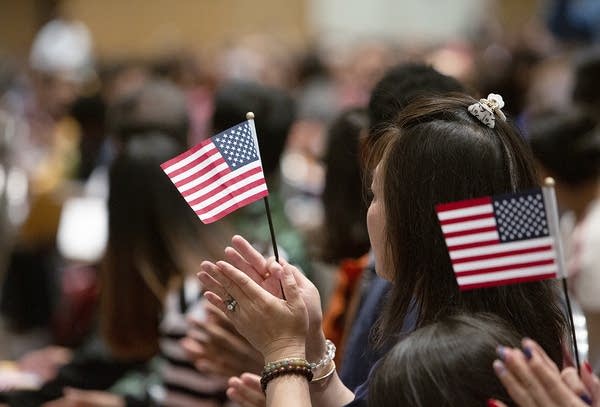Roots Beyond Race: Take a deep dive into all Minnesota's heritage groups

More than 500 people from 75 countries were sworn in as U.S. citizens during a naturalization ceremony last summer in St. Paul.
Christine T. Nguyen | MPR News file
Go Deeper.
Create an account or log in to save stories.
Like this?
Thanks for liking this story! We have added it to a list of your favorite stories.


